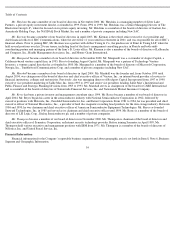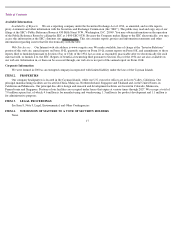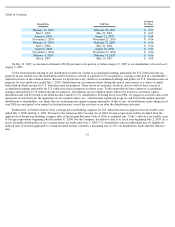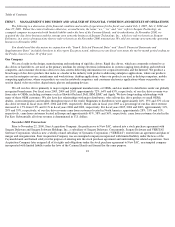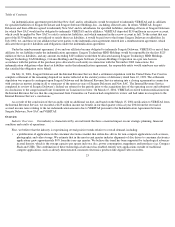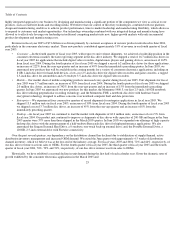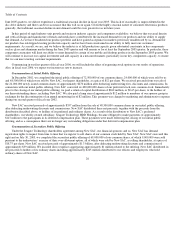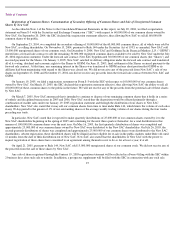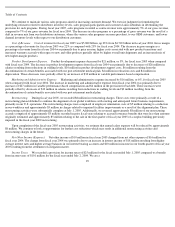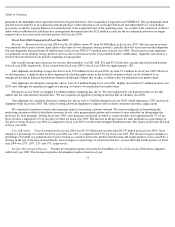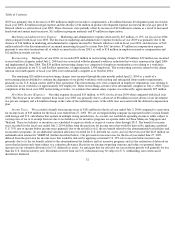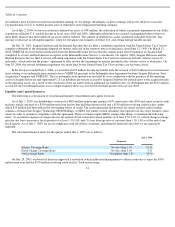Seagate 2004 Annual Report Download - page 28
Download and view the complete annual report
Please find page 28 of the 2004 Seagate annual report below. You can navigate through the pages in the report by either clicking on the pages listed below, or by using the keyword search tool below to find specific information within the annual report.
Table of Contents
June 2005 quarters, we did not experience a traditional seasonal decline in fiscal year 2005. This lack of seasonality is unprecedented in the
disc drive industry and there can be no assurance that this will occur again. Given the highly seasonal nature of consumer electronics products
generally, the traditional seasonal decline in unit demand could be even greater for us in future years.
In this period of rapid industry unit growth and strain on industry capacity and component availability, we believe that our areal density
and vertical design and manufacture of heads and media have contributed to the increased demand for our products and our ability to supply
that demand. As we have broadened our product portfolio and have gained acceptance in markets previously unaddressed by us, demand for
our products has outstripped existing production capacity and we have been constrained in our ability to fully meet our customers’
requirements. As a result, we are, and we believe the industry is at full production capacity given substantial constraints in key components
such as glass and aluminum media during the June 2005 quarter and will remain so for at least the September 2005 quarter. In particular, these
component constraints will limit our ability to meet demand for certain of our mobile and desktop products in the September 2005 quarter. We
will continue to increase our capital investment and add capacity in a measured manner, particularly in our key components capacity, to ensure
that we can meet existing customer requirements.
Commencing in our first quarter of fiscal year 2006, we will include the effect of expensing stock options in our results of operations.
Also, in fiscal year 2006, we expect our income tax rate to increase.
Consummation of Initial Public Offering
In December 2002, we completed the initial public offering of 72,500,000 of our common shares, 24,000,000 of which were sold by us
and 48,500,000 of which were sold by New SAC, our largest shareholder, at a price of $12 per share. We received proceeds from our sale of
the 24,000,000 newly issued common shares of approximately $270 million after deducting underwriting fees, discounts and commissions. In
connection with our initial public offering, New SAC converted its 400,000,000 shares of our preferred stock, into common stock. Immediately
prior to the closing of our initial public offering, we paid a return of capital distribution of $262 million, or $0.65 per share, to the holders of
our then-outstanding shares, including New SAC. We also paid a lump sum of approximately $12 million to members of our sponsor group in
exchange for the discontinuation of an annual monitoring fee of $2 million. This payment was charged to marketing and administrative expense
during our second quarter of fiscal year 2002.
New SAC received proceeds of approximately $557 million from the sale of 48,500,000 common shares in our initial public offering,
after deducting underwriting discounts and commissions. New SAC distributed these net proceeds, together with the proceeds from the
distribution described above, to holders of its preferred and ordinary shares. As a result of the distribution to New SAC’s preferred
shareholders, our wholly-owned subsidiary, Seagate Technology HDD Holdings, became obligated to make payments of approximately
$147 million to the participants in its deferred compensation plan. These payments were made following the closing of our initial public
offering, and as a consequence there are no longer any outstanding obligations under that deferred compensation plan.
Consummation of Secondary Public Offering
Under the Seagate Technology shareholders agreement among New SAC, our financial sponsors and us, New SAC has demand
registration rights to request from time to time that we register to sell shares of our common stock held by New SAC. New SAC exercised this
right and on July 30, 2003, we completed the secondary public offering of 69,000,000 of our common shares, of which 9,000,000 were sold
pursuant to the underwriters’ exercise of their over-allotment option, all of which were sold by New SAC, as selling shareholder, at a price of
$18.75 per share. New SAC received proceeds of approximately $1.3 billion, after deducting underwriting discounts and commissions of
approximately $39 million. We incurred direct expenses aggregating approximately $1 million related to the offering. New SAC distributed its
net proceeds to holders of its ordinary shares including approximately $245 million distributed to our officers and employees who hold
ordinary shares of New SAC.
26


